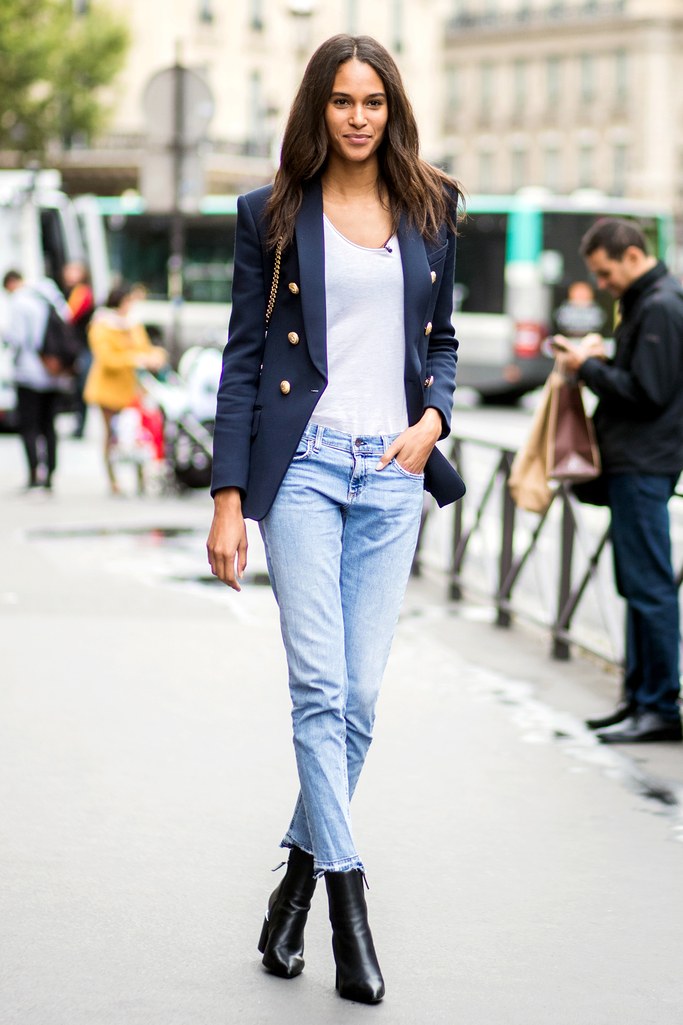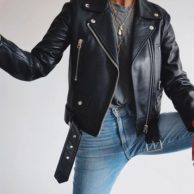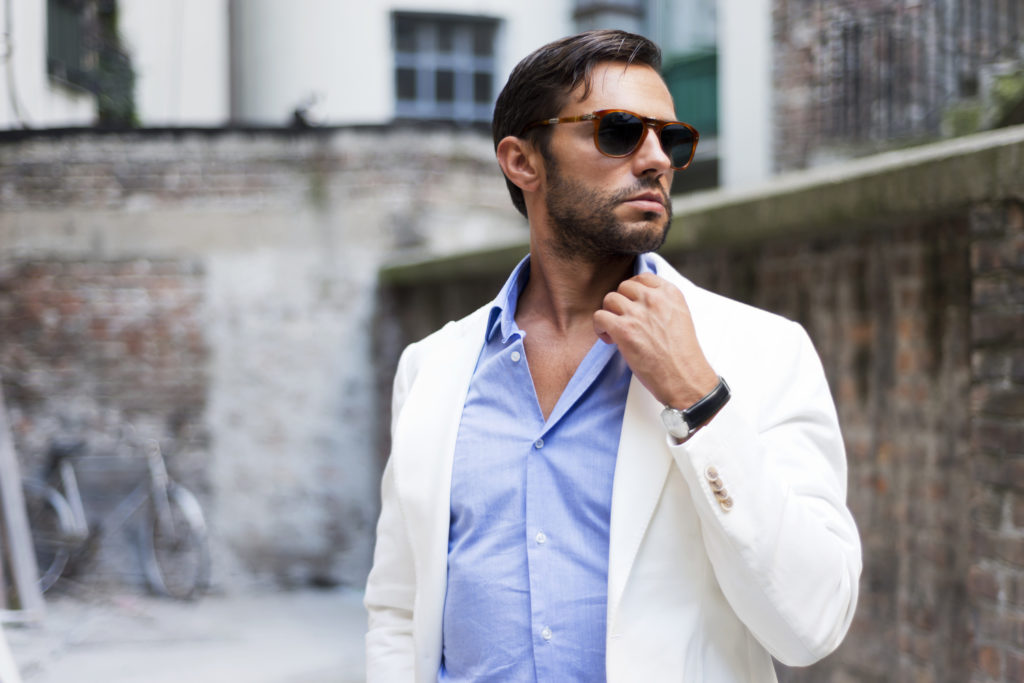
Underwear is the foundation of every outfit. The wrong underwear will ruin a look. No matter what size you are, perfectly fitting underwear will enhance your body shape. Be professionally fitted for bra size and style. Keep colour simple – black white and neutral. Avoid seeing your underpants – through clothes, above clothes and below clothes – shorts that are shorter than your underpants are probably not a good idea… at any age.
You need something to wear to a casual lunch; a job interview; business meeting; a date; a formal…
Keep in mind ‘less is more’.. buy fewer pieces, that are better quality and be discerning.
Jeans– Take the time to find a great pair that suit your body shape. Spend more on jeans because you live in them.
Jackets… A jacket is the starting point for so many great looks. Worn with pants, jeans, a skirt or shorts… You can make it casual or formal, depending on your style and destination. Go for a simple cut in fabric and colour and start to build. A denim jacket for summer nights over dresses; and a leather jacket.
A white shirt, and several white t-shirts. Always make sure they are clean, no stains with careful attention to shirt collars… Whites may have to be replaced seasonally and always keep napi san handy to soak them.
A selection of simple t-shirts and tops in basic colours – black, grey, navy, khaki. 2 or 3 plain V-neck jumpers in your favourite colours. Keep these pieces fresh. Buy cheaply and replace as soon as they look less than perfect. This includes hosiery (stockings, tights)
A little black dress and another great dress.
Three pairs of shoes: boots, flats and going out.
Personalise your basic wardrobe depending on your lifestyle… student, part time work, stay at home parent, work life … You will need hanging around at home clothes also. Be disciplined in buying these items, and remember that less is more. A lot of money is spent on impulse unnecessary pieces that clog your wardrobe.
Trends are fashion items that come and go so it’s best to buy inexpensive versions of these fleeting styles. Remember this – fashion fans who follow every catwalk trend have an identity problem. Sooner hopefully rather than later, you will realise that dressing from top to toe in the latest look does not work. We aren’t turned on by groups of girls wearing all the same clothes. We admire individuality, imagination and leaders not followers.
Classics, however, are at the heart of your style. These are investment pieces and where money is well spent. Subtle adjustments will make the difference between bringing your classics up to date and looking dated. This is where ‘trends’ can freshen up your look and help it evolve. The key is striking a balance between the look of the moment and your personal style. Every season, someone reinvents the perfect dress, blazer and shirt. So, when you are thinking about how to make trends work for you, look to the latest versions of the garments you love. Personalising a trend could mean wearing it in your favourite colour, choosing a hem length that works for you, or finding the shape that flatters you. After all, when you look good, you feel good. Blending confidence with personal style is the game aim!
When putting a wardrobe together, if your budget is limited, the most important thing is having the discipline to invest in one or two beautiful key pieces and mixing these with classic pieces like jeans, white shirts, cashmere knits …
In summary, plan your long term wardrobe: only buy pieces you can’t live without, and don’t be controlled by trends.


